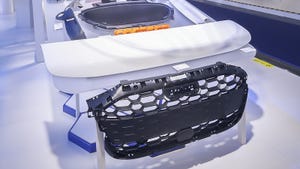BASF switches to “greener” PolyFR flame retardant in PS insulation foam portfolio
Nine months ahead of the deadline laid down in the EU REACH Regulation on chemicals, BASF has become one of the first European manufacturers to have switched its entire portfolio of polystyrene-based insulation products for the European market to a new, more environmentally friendly flame retardant. The company announced today that its EPS products Styropor and Neopor, as well as its extruded polystyrene XPS, Styrodur, will henceforth be manufactured in Europe with PolyFR, instead of the HBCD (hexabromocyclododecane) flame retardant used in the past.
November 25, 2014
Polystyrene foam insulation contains flame retardants to comply with European fire performance standards for construction products. HBCD has allowed PS foam insulation to meet these standards, but is scheduled to be phased out by 2014 in Japan and by 2015 in the European Union because of its PBT properties (Persistent, Bio-accumulative, Toxic).
PolyFR, which was launched by The Dow Chemical Co. in 2011, is a butadiene styrene brominated copolymer; a stable high molecular weight, non-PBT additive that can be used in XPS and expanded polystyrene (EPS) foams. In 2011, Dow licensed the technology in the foam insulation industry through manufacturing and marketing licenses. The material earned Dow an R&D 100 Award in 2012.
PolyFR enables insulation materials to be manufactured that meet the strict fire regulations applicable to construction products. Specifically, products made with this material will meet class B1 specifications under German standards ("schwerentflammbar": difficult to ignite) and Class E under European standards.
Giorgio Greening, at BASF Global Business Unit Styrenic Foams, explained why BASF decided to make the switch now, instead of waiting. "By switching to PolyFR, we can guarantee the supply of eco-efficient thermal insulation products for sustainable building projects in the future," he said.
"Energy efficiency in the commercial and residential construction sector is now a bigger challenge than ever for the entire value chain. It is our job, as a raw material manufacturer, to supply our customers, i.e. insulation material manufacturers, with a high-quality material with optimal properties."
BASF completed the switchover to the new flame retardant in close liaison with its customers. BASF had already switched most of its EPS range by March of this year and has already supplied customers throughout Europe.
PolyFR availability is not expected to pose any problem: by the EU sunset date in August 2015, the availability of PolyFR is projected to be more than sufficient to cover European, and indeed global, demand.
Since 2011, when Dow Global Technologies LLC announced the first license agreement for the flame retardant, the industry was expecting significant commercial volumes to be available by 2013-2015 in line with market demand, allowing the global polystyrene foam insulation industry to prepare for a smooth transition from HBCD to the alternative in line with national regulations. In 2013, Dow issued a press release announcing that the PolyFR was licensed to the three largest producers: Chemtura, ICL Industrial Products and Albemarle. Global PolyFR production capacity now reaches 23,000 metric tons, helped along by ICL Industrial's new 10,000 mt production facility in Israel, which started up production in October of this year.
About the Author(s)
You May Also Like


